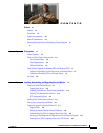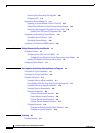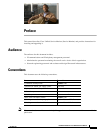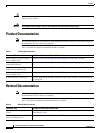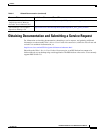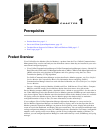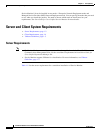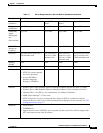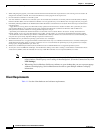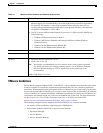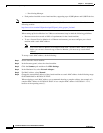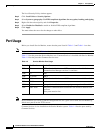
CHAPTER
1-1
Installation Guide for Cisco Unified Service Monitor
OL-25111-01
1
Prerequisites
• Product Overview, page 1-1
• Server and Client System Requirements, page 1-2
• Terminal Server Support for Windows 2003 and Windows 2008, page 1-7
• Port Usage, page 1-8
Product Overview
Cisco Unified Service Monitor (Service Monitor), a product from the Cisco Unified Communications
Management Suite, receives and analyzes data from these sources when they are installed in your voice
network and configured properly:
• Cisco Unified Communications Manager (Unified Communications Manager) clusters—Retain Call
Detail Records (CDRs) and Call Management Records (CMRs). CDRs include Mean Opinion Score
(MOS) values that were calculated on IP phones and voice gateways using the Cisco Voice
Transmission Quality (CVTQ) algorithm.
For Unified Communications Manager versions that Service Monitor supports, see Cisco Unified
Service Monitor 8.6 Compatibility Matrix. For information about configuring Unified
Communications Manager clusters to work with Service Monitor, see User Guide for Cisco Unified
Service Monitor.
• Sensors—Network Analysis Modules (NAMs) and Cisco 1040 Sensors (Cisco 1040s)—Compute
MOS for each RTP stream. Service Monitor obtains data from sensors every 60 seconds.
Service Monitor compares MOS against a threshold value—default or user-specified—for the codec in
use. When MOS drops below the threshold, Service Monitor generates SNMP traps and sends them to
up to four recipients. Service Monitor stores the data that it obtains in the database, where it is available
for display on Service Monitor reports. Service Monitor purges the database daily to maintain a
configurable number of days of data. (For more information, see the online help.)
If you configure Cisco Unified Operations Manager (Operations Manager) as a trap receiver for
Service Monitor, Operations Manager can further analyze, display, and act on the traps that Service
Monitor generates. Operations Manager can generate service quality events, display and track these
events on a real-time dashboard, and display and store event history. You can configure additional event
settings on Operations Manager to alert you if MOS drops below a threshold or if too many (configurable
number) service quality events occur during a period of time (configurable number of minutes). In
addition, you can configure Operations Manager to send notifications by e-mail, SNMP trap, and syslog
message.



